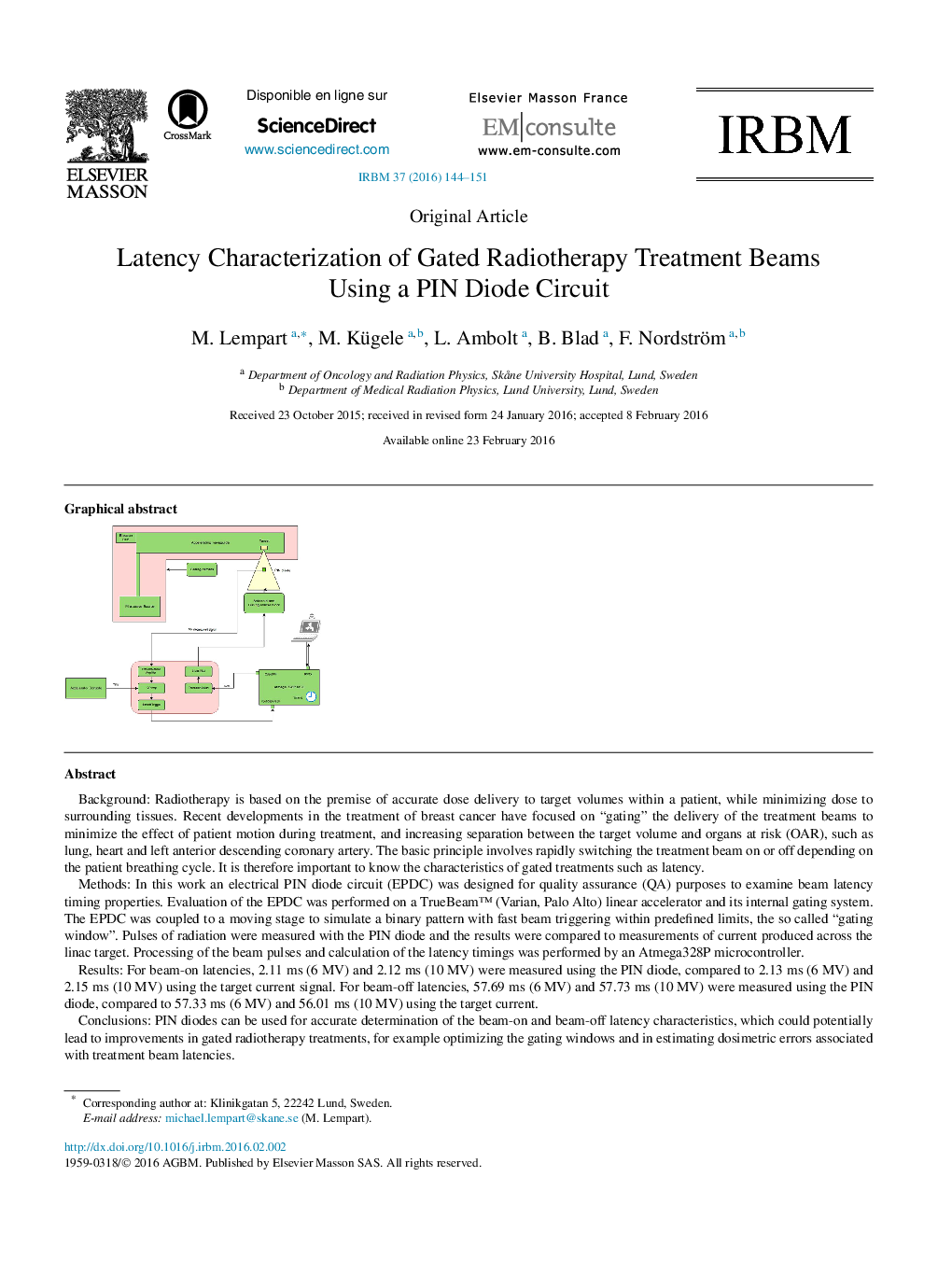| Article ID | Journal | Published Year | Pages | File Type |
|---|---|---|---|---|
| 870749 | IRBM | 2016 | 8 Pages |
•Design of an electrical PIN diode circuit for beam latency measurements of gated radiotherapy treatment beams.•Evaluation was performed on a TrueBeam™ linear accelerator and its internal gating device.•The developed circuit could be used as an independent tool for quality assurance (QA) purposes on different models of accelerators and gating systems.
Background: Radiotherapy is based on the premise of accurate dose delivery to target volumes within a patient, while minimizing dose to surrounding tissues. Recent developments in the treatment of breast cancer have focused on “gating” the delivery of the treatment beams to minimize the effect of patient motion during treatment, and increasing separation between the target volume and organs at risk (OAR), such as lung, heart and left anterior descending coronary artery. The basic principle involves rapidly switching the treatment beam on or off depending on the patient breathing cycle. It is therefore important to know the characteristics of gated treatments such as latency.Methods: In this work an electrical PIN diode circuit (EPDC) was designed for quality assurance (QA) purposes to examine beam latency timing properties. Evaluation of the EPDC was performed on a TrueBeam™ (Varian, Palo Alto) linear accelerator and its internal gating system. The EPDC was coupled to a moving stage to simulate a binary pattern with fast beam triggering within predefined limits, the so called “gating window”. Pulses of radiation were measured with the PIN diode and the results were compared to measurements of current produced across the linac target. Processing of the beam pulses and calculation of the latency timings was performed by an Atmega328P microcontroller.Results: For beam-on latencies, 2.11 ms (6 MV) and 2.12 ms (10 MV) were measured using the PIN diode, compared to 2.13 ms (6 MV) and 2.15 ms (10 MV) using the target current signal. For beam-off latencies, 57.69 ms (6 MV) and 57.73 ms (10 MV) were measured using the PIN diode, compared to 57.33 ms (6 MV) and 56.01 ms (10 MV) using the target current.Conclusions: PIN diodes can be used for accurate determination of the beam-on and beam-off latency characteristics, which could potentially lead to improvements in gated radiotherapy treatments, for example optimizing the gating windows and in estimating dosimetric errors associated with treatment beam latencies.
Graphical abstractFigure optionsDownload full-size imageDownload as PowerPoint slide
